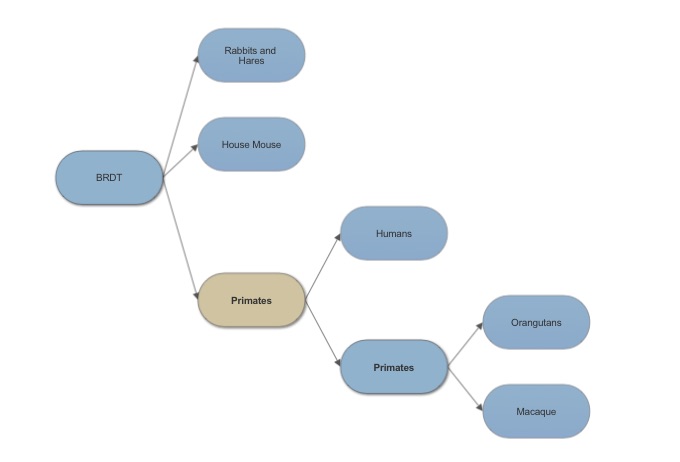User:Elisha Lacey/Sandbox 1
From Proteopedia
(Difference between revisions)
| Line 2: | Line 2: | ||
<StructureSection load='1stp' size='340' side='right' caption='Bromodomain testis specific as functional dimer=''> | <StructureSection load='1stp' size='340' side='right' caption='Bromodomain testis specific as functional dimer=''> | ||
The human genome has 56 bromodomains across 42 proteins. Bromodomains are found in mammals. Bromodomain testis specific(BRDT) and expressed in testis, spermatocytes, spermatids, and spermatozoa. BRDT is also known as known as CT9 and RING3-like protein and belongs to the bromodomain extra terminal (BET) family. BRDT is expressed in pachytene and diplotene spermatocytes and round spermatids. BRDTis not in testis subjects with sertoli cell only syndrome. | The human genome has 56 bromodomains across 42 proteins. Bromodomains are found in mammals. Bromodomain testis specific(BRDT) and expressed in testis, spermatocytes, spermatids, and spermatozoa. BRDT is also known as known as CT9 and RING3-like protein and belongs to the bromodomain extra terminal (BET) family. BRDT is expressed in pachytene and diplotene spermatocytes and round spermatids. BRDTis not in testis subjects with sertoli cell only syndrome. | ||
| - | + | <scene name='71/719804/Brdt_bromo_domains/1'>BRDT dimers</scene> | |
== Function == | == Function == | ||
Bromodomain testis specific is a monomer that is only fully functional as a dimer. BRDT is a transcriptional regulator for gene expression during spermatogenesis. | Bromodomain testis specific is a monomer that is only fully functional as a dimer. BRDT is a transcriptional regulator for gene expression during spermatogenesis. | ||
Revision as of 04:44, 10 December 2015
Bromodomain testis specific
| |||||||||||
References
Berkovits B, Wolgemuth D. The first bromodomain of the testis-specific double bromodomain protein Brdt is required for chromocenter organization that is modulated by genetic background. PMC. 2011 Dec 15: 360 (2):358-368.
Barda S, Yogev L, Paz G, et al. BRDT gene sequence in human testicular pathologies and the implication of its single nucleotide polymorphism (rs3088232) on fertility. Andrology. 2014 May 28; 2(4): 641-647.
Zdrojewicz Z, Konieczyn R, Papier P, Szten F.Brdt Bromodomains Inhibitors and Other Modern Means of Male Contraception. ACEM. 2015 Feb 23; 24(4):705-714.


